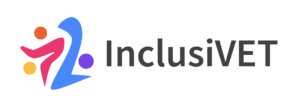Summary
After reading this module, you will know and understand the purpose of the institutional self-assessment of inclusiveness, and why the results can be used as the basis for a data-driven inclusiveness development plan. You know the different parts of the self-evaluation and understand the relationship between them. Finally, having an understanding of the self-assessment tool, you are able to register yourself as a first-time participant in your school and to carry out the assessment of your institution by yourself. Furthermore, as a student support teacher, you can support your students in completing the student self-assessment.
As a summary of the chapter, you can also watch the following video:
Connections to the Other Modules
You can further investigate these topics in modules
4: Learners’ Sense of Belonging
5: Teaching, Learning, and Assessment Environments: learners’ engagement in learning process
14: Data-driven Institutional Evaluations
16: Development of Data-driven Institutional Inclusivity Action Plan
17: Mentoring a Learner-led Review by Learner Support Staff
Please, note that to use the self-assessment tool in a meaningful way, you need to have a clear understanding of the following key terminology used by the tool: Underrepresented learners, Inclusion, and Learner engagement. For a detailed explanation of these key concepts, you can learn about these concepts in modules
1: Understanding Inclusive Education in VET
2: Warning Signals of Inclusivity Problems in the Classroom and at School
3.1: Understanding Learner Engagement in VET
